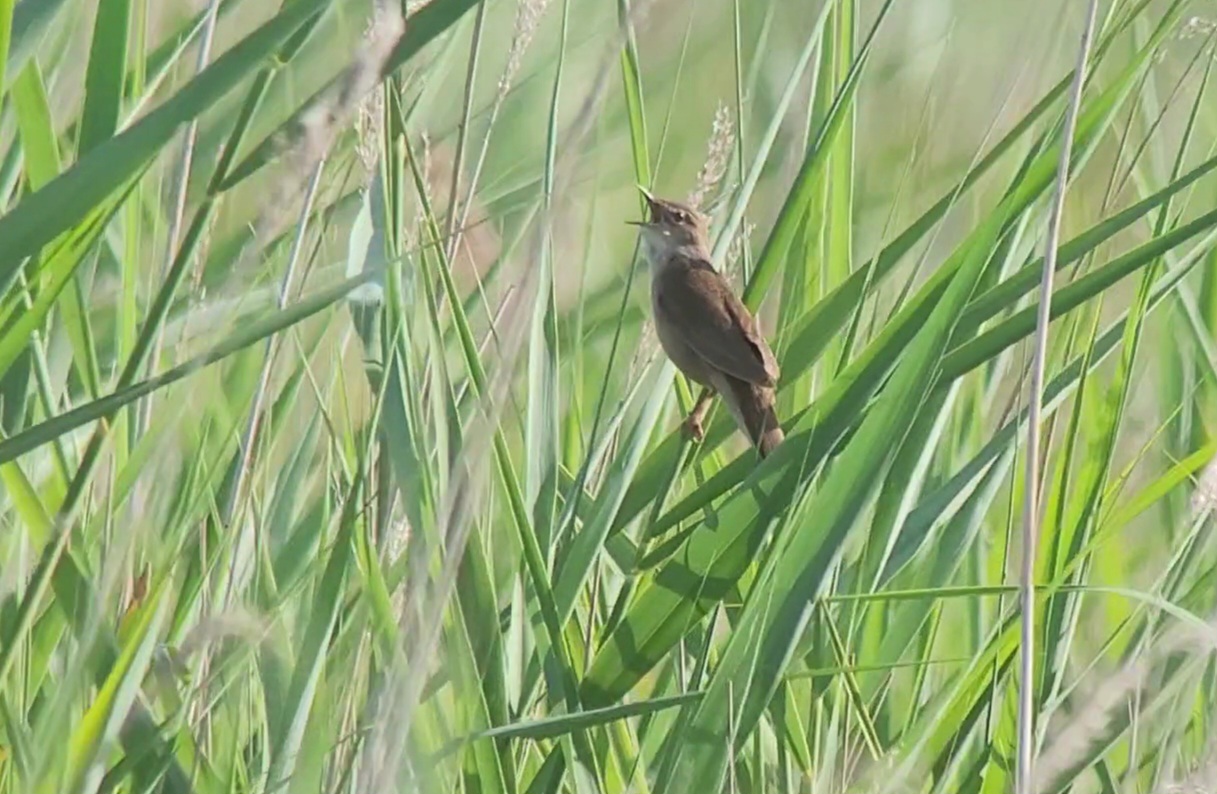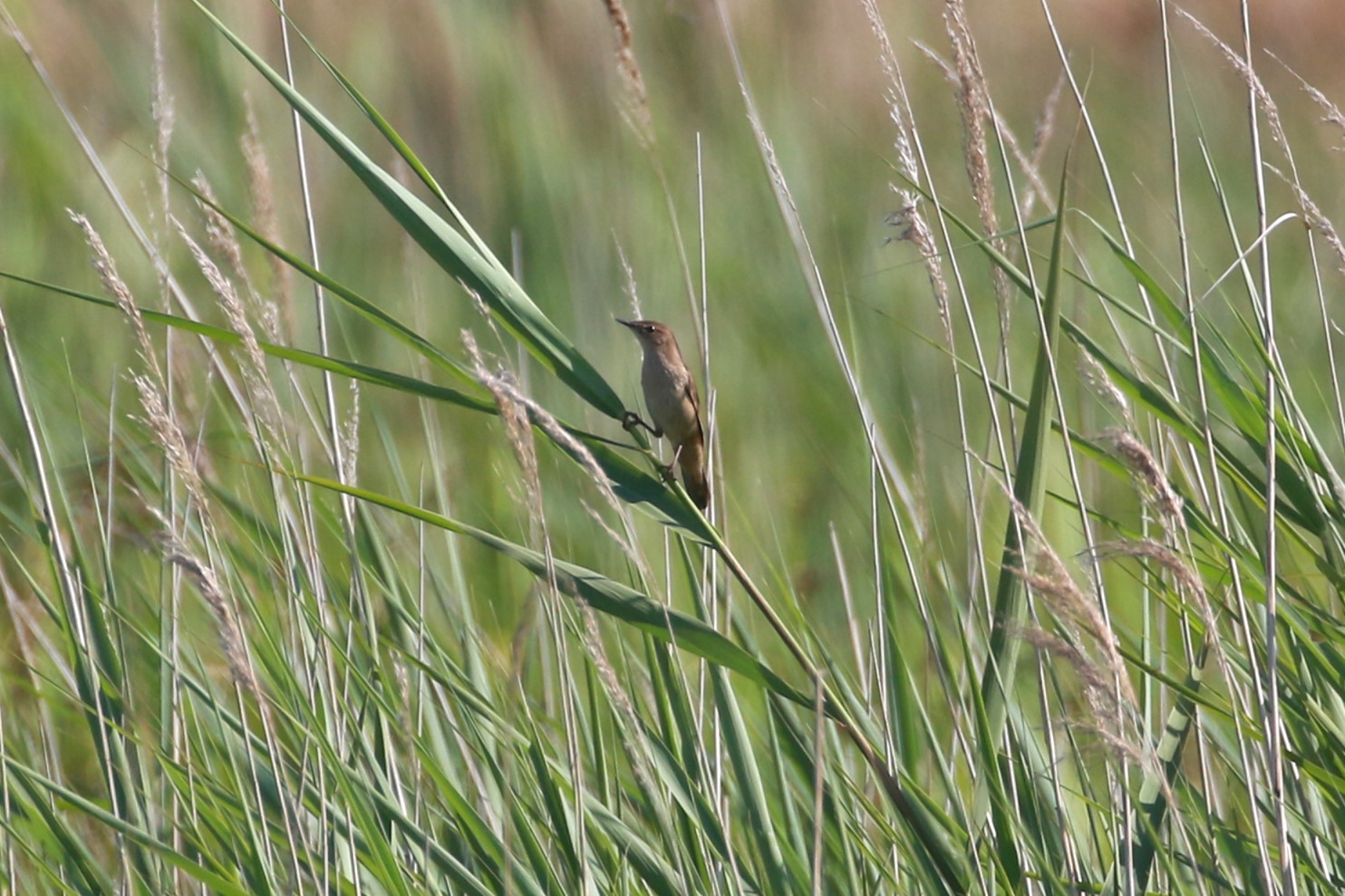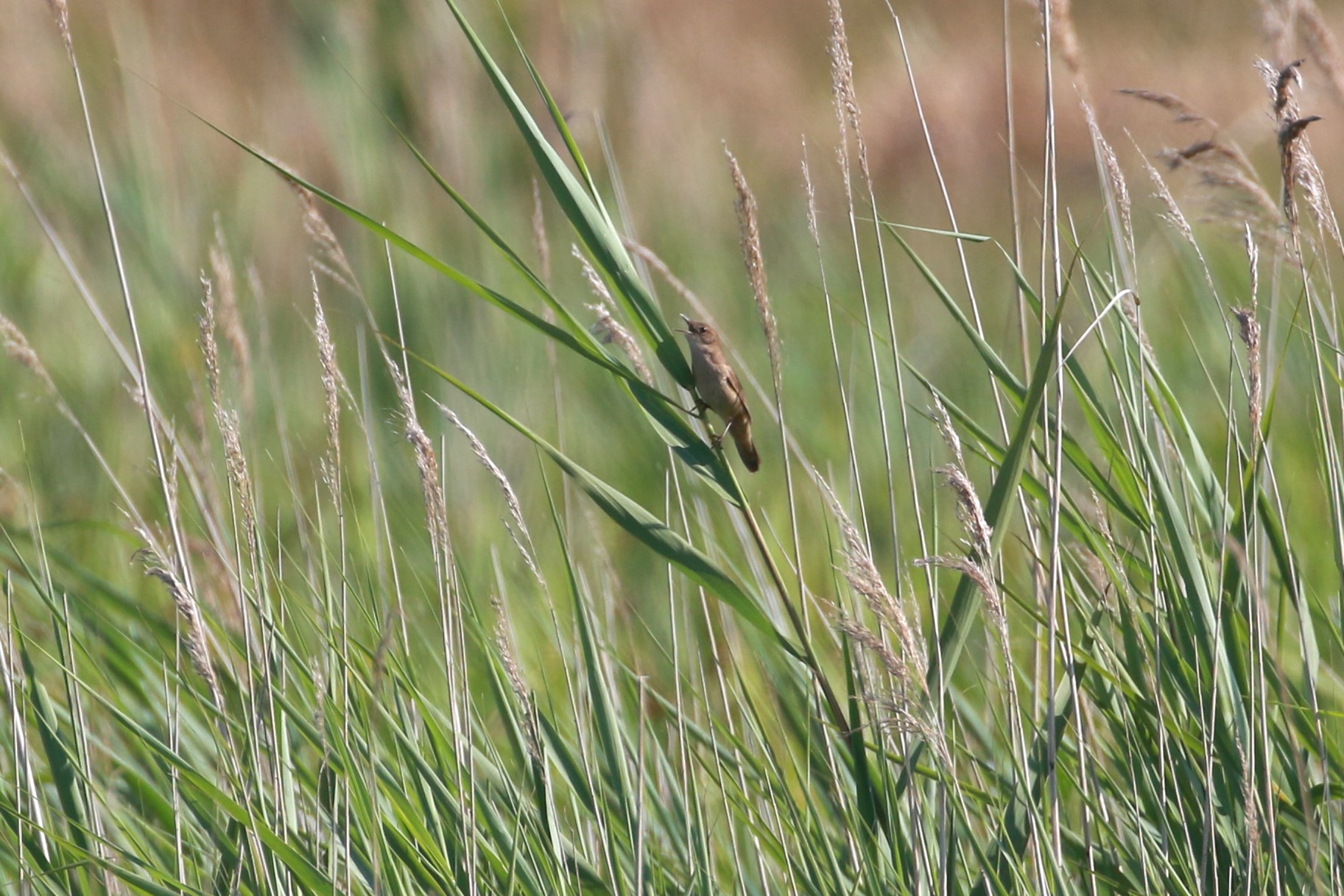Savi's Warbler Locustella luscinioides

Savi's Warbler, Saltfleetby-Theddlethorpe Dunes NNR, June 19th (left-hand two) and July 4th, 2025 (Owen Beaumont).
Savi’s Warbler remains a vagrant in Lincolnshire with six records between 1967 and 1992. The first was trapped at Pyewipe Marsh near Lincoln and the BBRC report for that year revealed that the species had for several years been breeding in Kent and that “records from two other counties (Lincolnshire and Norfolk) encourage the hope that further suitable localities will be colonised in the course of time”. The birds in 1986 and 1992 were singing males, the first present for eight days, the second more briefly. Optimism for colonisation has since dimmed and the species remains a very rare breeder in Britain with ten pairs or fewer every year since 1993 (Holling 2019). In England they tend to prefer extensive managed reedbeds of a scale that is rare in Lincolnshire. Most of the records since 1986 have been in East Anglia and south coast counties like Kent and Hampshire.
| Site | First date | Last date | Count | Notes |
| Pyewipe marsh, Lincoln* | 09/05/1967 | 11/05/1967 | 1 | Singing male, trapped |
| Theddlethorpe | 03/08/1969 | 1 | Singing male | |
| Bardney | 22/08/1969 | 1 | Singing male | |
| Saltfleetby-Theddlethorpe NNR | 05/09/1976 | 07/09/1976 | 1 | |
| Lincoln Ballast Pit (now Boultham Mere)* | 18/06/1986 | 25/06/1986 | 1 | Singing male |
| Chapel Pit LWT reserve | 16/05/1992 | 17/05/1992 | 1 | Singing male |
| Saltfleetby-Theddlethorpe Dunes NNR | 19/06/2025 | 08/07/2025 | 1 | Singing male, in FWM at Rimac |
Finder’s report: Savi’s Warbler near Lincoln, May 9th, 1967, first county record.
by P. Prince.
Note: this account is based on the original RC submission. The RC report for 1967 noted that it had been recently disclosed that this species, which was a regular summer visitor in small numbers to the fens of Norfolk, Cambridge, and Huntingdon up to 1856, has now been breeding for several years in Kent. The records above from two other counties (Norfolk and Lincolnshire) encourage the hope that further suitable localities will be colonised in the course of time. Although Savi’s Warblers may well have bred in the county prior to drainage of the fens, this is the first substantiated county record. Modern day birders may be surprised to see that in the 1970s, there was an average of around 22 records per year (peak of 41, 1978), and this continued into the early 1980s with 86 records 1980-82.
Circumstances
On the evening of May 9th, 1967, I visited a marsh** near Lincoln and heard a song similar to that of a Grasshopper Warbler, Locustella naevia, but sounding rathe unusual. The reelin trill seemed very loud, lower pitched than Grasshopper Warbler, and not changing pitch at all and lasting for about 10-15 seconds. I immediately suspected a Savi’s Warbler as I had previously heard one in Holland in 1965 and had never heard anything like it during a long association with Grasshopper Warblers.
I tried to get a good view, but the bird was very skulking and did not sing frequently, so that it was difficult to locate. The only details seen during brief glimpses were a very white throat and an unstreaked brown crown. The next evening, May 10th, I returned with mist-nets as I had already gained permission to trap in the marsh. Further field notes were obtained and from close range a soft ‘tic-tic’ note was heard as the bird skulked about. The unstreaked brown upperparts were seen, and the white belly and throat were well seen. The tail was noticeably long and heavy and drooped as the bird flitted along close to the ground. A pale eye stripe and brownish flanks and suffusion across the breast were also seen.
I was now sure that it was a Savi’s Warbler and decided to trap it to obtain more details. However, I did not succeed until nearly dark when the bird had begun to sing more often. As it was not possible to take details I ringed it and returned home with it. On the way I telephoned A. D. Townsend and K. Atkin who met me when I arrived home. A description was taken (in artificial light) and measurements made by K. Atkin. The bird was released at dawn the next day in exactly the same place where it was caught. We all returned that evening and subsequently, but it has not been seen or heard again. The exact location** is not being revealed in case the bird is a forerunner of a breeding population as the site seems a suitable habitat. This is the first record for Lincolnshire as there is no record of it having bred in the fens although this seems probable.
**Pyewipe marsh, Lincoln.
Description
General appearance – similar in shape to Grasshopper Warbler but seemed slightly larger. Apart from the abraded tail the rest of the plumage seemed fresh.
Head and crown –fairly long but narrow pale buff supercilium. Indistinct dark brown lone through the eye. Cheeks and ear coverts paler brown.
Upperparts – unstreaked, deep, rich brown, darker on crown and slightly paler on rump. Outer web of second primary buffish-white. Bastard wing pale brown, contrasting with rest of upperwing.
Underparts – no streaks. Chin, throat, and belly white. Flanks warm brown suffused across breast but paler in centre. Undertail coverts as flanks with narrow whitish tips.
Tail – broad and well graduated but rather abraded. Appeared darker brown than crown due to fairly prominent fault barring.
Bare parts – upper mandible dark brown with narrow pale cutting edge. Lower mandible pinkish at base with brown tip. Inside of mouth pale flesh. Eyes brown, legs and feet pinkish-flesh.
Biometrics - wing 70 mm; bill 16 mm; tarsus 21 mm; tail 62 mm; weight 16.8 g.
Wing formula – no emarginations on primaries and no notch on inner web of second primary.
1st primary = primary coverts.
2nd primary = wing point.
3rd primary = -1 mm from wing point.
4th primary = -4 mm from wing point.
5th primary = -8 mm from wing point.
6th primary = -10 mm from wing point.
10th primary = -17 mm from wing point



